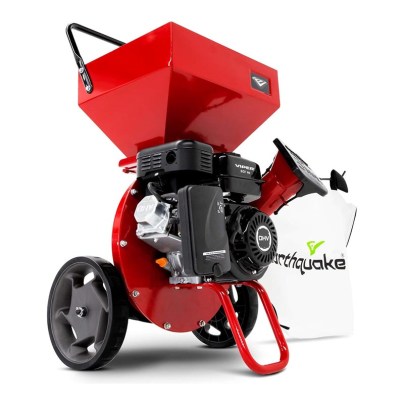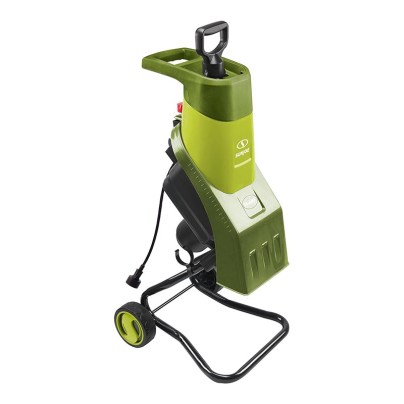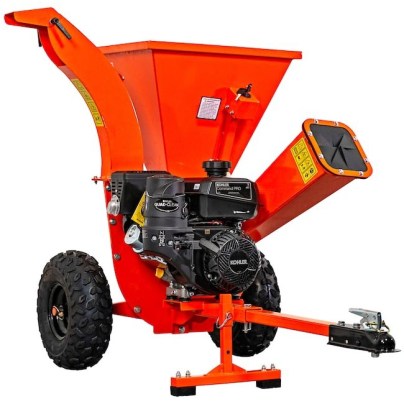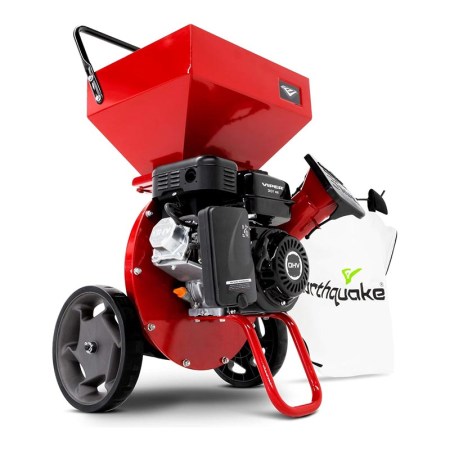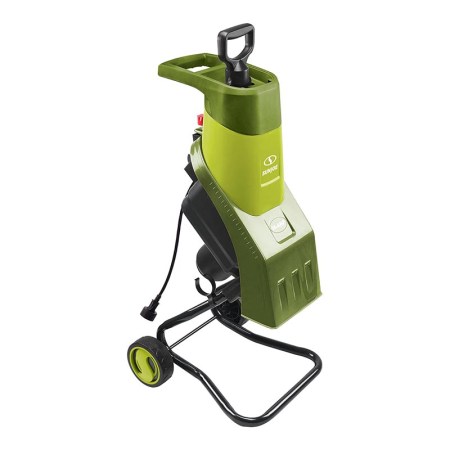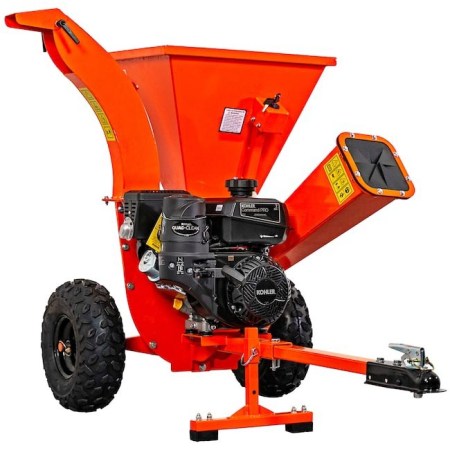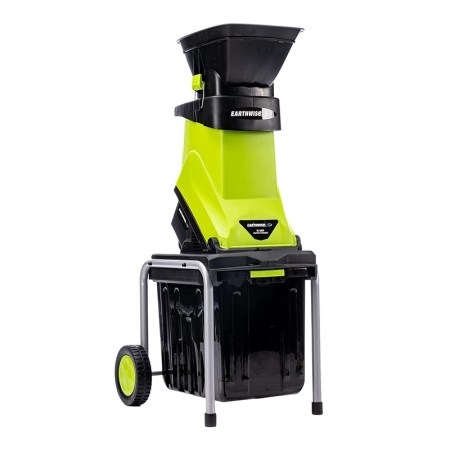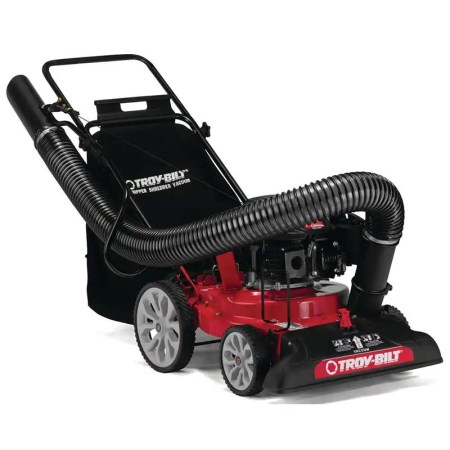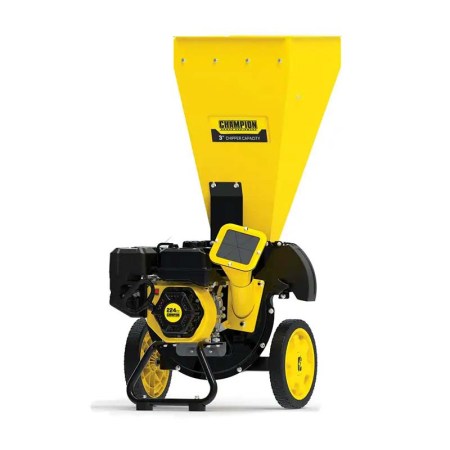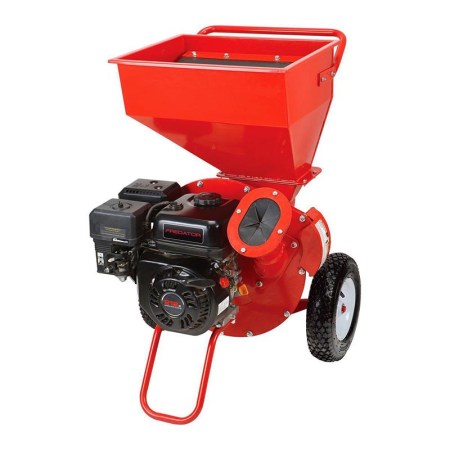We may earn revenue from the products available on this page and participate in affiliate programs. Learn More ›
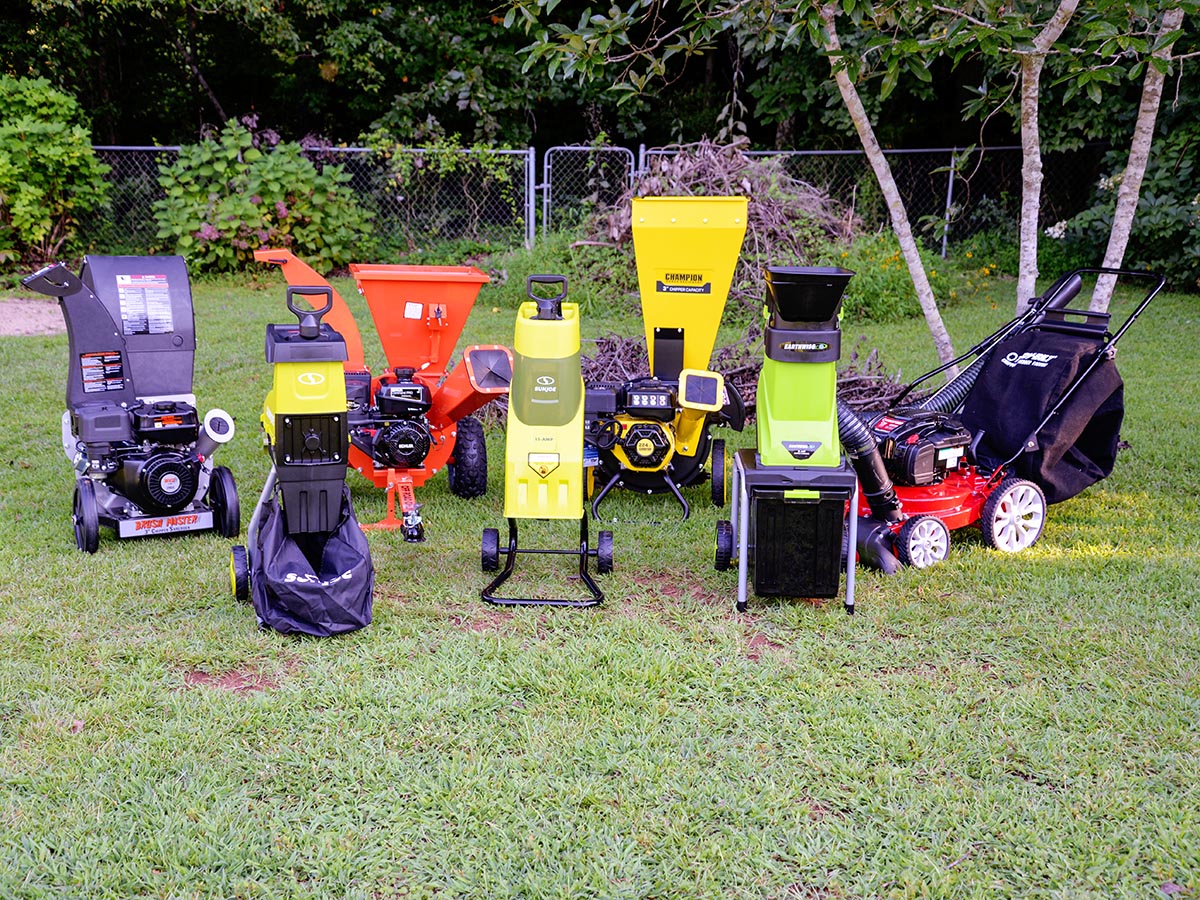
A wood chipper cuts twigs, limbs, branches, and other solid yard material into small pieces. These chips may provide mulch for a garden, kindling for a fire pit, or even the raw material for pressed wood to make furniture or complete other carpentry projects.
The best wood chipper for home usemust accommodate the twigs and branches you feed into it and suit your power requirements. While thebest electric wood chipperis quieter and runs on a home power supply, gas and power take-off (PTO) models are much more powerful, cutting through more material at a faster pace.
We interviewed a landscaping expert to get his insight on what specifically to look for. Then we shopped around to identify electric and gas-powered wood chippers that our readers could count on for their outdoor cleanup projects. Then we spent more than 8 hours assembling and testing the following picks in a huge brush pile in order to compare wood chippers. Continue reading for insight on our shopping considerations and check out ourwood chipper reviews to see how each of these models performed in our tests—and why one of them may be the best wood chipper for your project.
- BEST OVERALL: Earthquake K33 Chipper Shredder
- BEST BANG FOR THE BUCK: Sun Joe CJ601E Electric Wood Chipper
- UPGRADE PICK: DK2 OPC503 3-Inch Disk Chipper Shredder
- BEST FOR COMPOSTING: Earthwise Electric 15-Amp Corded Chipper Shredder
- BEST WITH LEAF VACUUM: Troy-Bilt CSV060B Chipper Shredder Vacuum
- BEST HEAVY-DUTY: Champion Power Equipment 3-Inch Chipper Shredder
- ALSO CONSIDER: Predator 6.5 HP 212cc Chipper Shredder
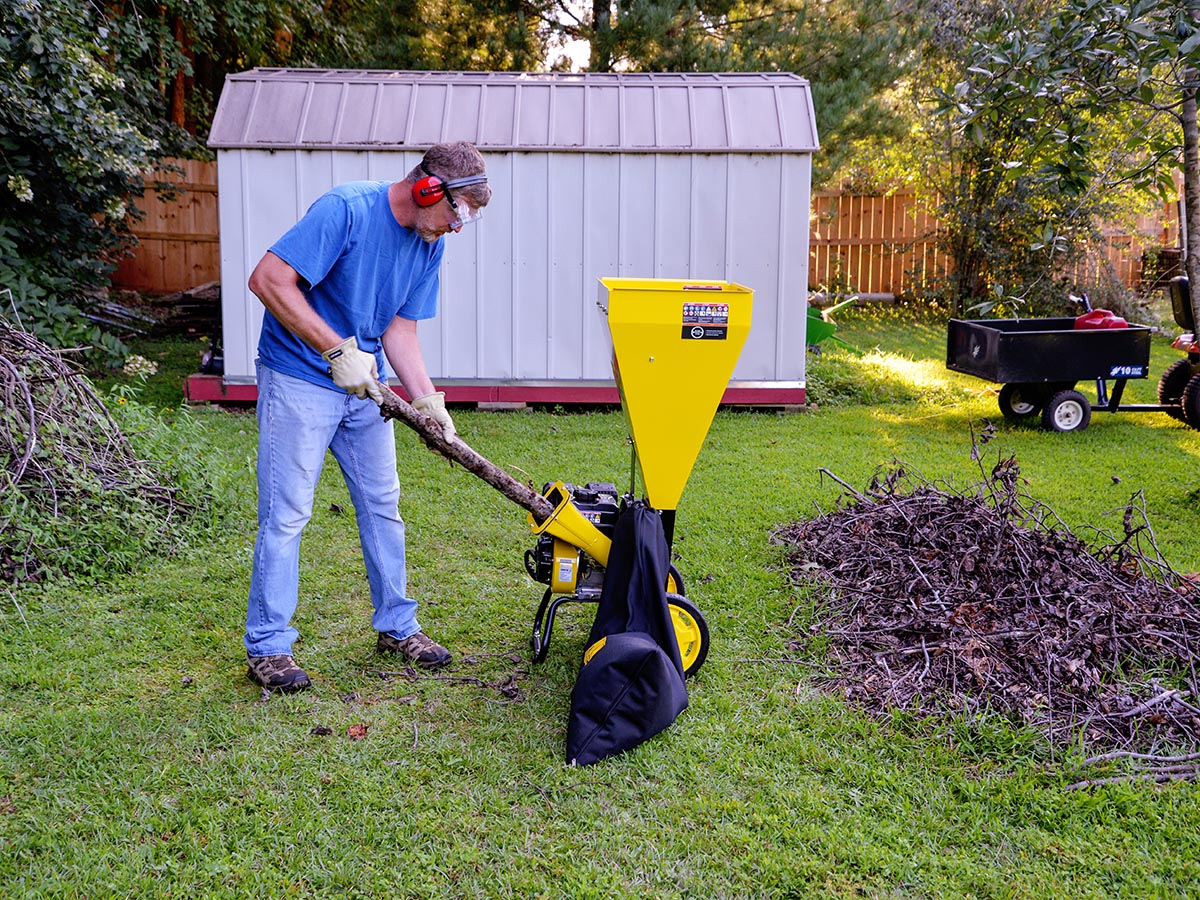
How We Tested the Best Wood Chippers
Our testing observations and comparison started with unpacking and assembling the chippers. All of the electric wood chippers came together in about 15 minutes as they were all comparatively lightweight and compact. While basic, disposable tools were included in the packaging; however, using personally owned tools ought to make the job go faster and easier. All of the electric chippers require a heavy-duty 12-gauge extension cord to avoid tripping the circuit breaker during operation.
Assembling each of the gas-powered chippers took 45 minutes to 1 hour and required installation of the hopper, branch chute, safety guards, discharge chute, wheels, and standing brace. These machines all weigh more than 100 pounds, so it’s a good idea to have a helper. Again, the included tools will get the job done, but using ones from a personal tool kit makes the process more comfortable. The packages included engine oil and gasoline that must be added before operation.
After assembly, we transported each of the chippers across the lawn to the worksite. In so doing, we noted that the small plastic wheels on the electric chippers provided the most stability on solid, flat ground. The larger hard wheels on the gas machines worked fine on average lawns but caused some struggles on sloped, uneven surfaces. The towable DK2 chipper, which includes a handle for moving by hand, was the easiest to move on rough ground.
In general, chippers with wheels on the same side of the machine as the handle—what we called a “hand-truck” configuration—were easier to maneuver than those with wheels and handles on opposite sides of the machine, like a wheelbarrow. The wheelbarrow configuration requires the user to lift the handle and bear more of the machine’s weight versus the hand-truck configuration, which transfers more weight to the wheels.
Finally, we set up and operated each chipper for 30 minutes. During operational testing, we fed each model a combination of large and small branches, including green wood and dried wood, and dry leaves (when applicable) to observe the full range of functionality. In addition to the machine’s ability to chip, we observed chip consistency, working stability, operator comfort, and noise level from a purely subjective standpoint to help determine our preferences and recommendations.
We also spoke to Kaustubh Deo, president of Blooma Tree Experts, a tree care company based in Seattle, Washington, featuring International Society of Arboriculture (ISA)–certified arborists with over 17 years of experience. He says that once you’ve purchased a chipper, “Don’t forget to follow the maintenance instructions in the guides. Make sure you keep the chipper knives sharp and rotate them.” He also adds this expert tip: “Rental shops that rent out chippers should be able to sharpen chipper knives for you.”
Our Top Picks
We tested some of the top-rated wood chippersin our test facility brush pile. Read on to learn how each of these machines performed in our tests and why we consider them to be among the best wood chippers for home use.
Best Overall
Earthquake K33 Chipper Shredder
See ItProduct Specs
- Engine: 301cc gas engine
- Branch capacity: 3 inches
- Weight: 140 pounds
Pros
- Powerful 301 cubic centimeter (cc) 4-cycle gas engine starts easily and handles tough material without stalling
- Chips hardwood and softwood branches up to 3 inches in diameter
- Low shredder hopper for easier loading of leaves and small debris
- Includes a dock-and-lock bagging system for easy mulch collection and disposal
- Large 11-inch airless wheels and high-angle handle for easy transport
Cons
- Pricey compared to other options on the market
- Includes a 20-ounce bottle of motor oil, but the engine needs 37.2 ounces of oil
The best all-around wood chipper we tested was durably built, easy to operate, and tackled the toughest branches without bogging down. It also featured a compact design that made it easy to transport and store. A 301cc gas engine and dual-knife chipper disc allow the Earthquake K33 chipper shredder to tackle branches up to 3 inches in diameter. Four hammer assemblies (two J-hammers and two tri-hammers) on the shredder make quick work of leaves, pine cones, smaller sticks, and other yard waste.
The big, powerful engine is the key to this chipper’s success. It started on the first pull and produced more than 13 foot-pounds of torque, while the other gas models in the test group averaged just over 11 foot-pounds. With that kind of power, the Earthquake K33 did an outstanding job chipping the thickest branches that bogged down or stalled out the other chippers.
When it came to shredding, we liked that the hopper opening was just 35 inches high, whereas some of the others were over 40 inches high. The lower height made it easier to load, especially when we were dumping large quantities of debris from a container. To offset the low height and still allow for leverage to make transport easy, the handlebar attaches at an angle so that it is higher than the rim of the hopper.
The debris bag worked great, too. Rather than relying on a drawstring as most models did, this one uses a locking bracket with its own handle. A support rod holds the bag open so that it fills all the way, with no need to reposition or shake down the material. When it’s full, the handle rotates off the mounting bracket for transport, and a heavy-duty zipper on the opposite end facilitates fast disposal.
We felt that the performance and build quality warranted the premium price for this wood chipper. Although it’s not the cheapest model available, the Earthquake K33 would make a smart pick for heavier use on larger properties.
Get the Earthquake wood chipper at Amazon, Lowe’s, or Mowers at Jacks.
Best Bang for the Buck
Sun Joe CJ601E Electric Wood Chipper
See ItProduct Specs
- Engine: 14 amp (A) corded electric
- Branch capacity: 1.5 inches
- Weight: 25.4 pounds
Pros
- Shreds branches up to 1.5 inches thick; suitable for most yard debris
- Strong 14A electric motor powers through hard, dry wood
- Upright configuration saves space in storage
Cons
- Not made for shredding leaves or soft, pliable stems; can clog the machine
- Operates more slowly than other electric chippers
For those who want to save money when cleaning up a small yard, Sun Joe’s 14A electric wood chipper could be considered thebest budget wood chipperaround. This affordable small wood chipper uses an electric motor that runs at speeds up to 4,300 revolutions per minute (rpm). As a light-duty chipper, it won’t clear fallen trees or do heavy landscaping work, but it cuts sticks and limbs up to 1.5 inches thick and produces usable mulch for the garden or yard. When the job is done, its compact, upright design won’t take up a lot of room.
This electric chipper has the lowest average price of all the models we tested, making it a smart choice for budget shoppers with limited storage space. Setup and start-up took about 15 minutes, and all tools were included in the box. We also noticed right away that this chipper was even lighter than the other electric models, weighing in at just over 25 pounds. The stated reduction ratio is 16:1 (to reduce a volume equal to 16 bags of debris down to one).
After a half hour of grinding branches, we noted that this Sun Joe model operates somewhat slower than other electric chippers and produces larger particles. In 30 minutes of chipping a mix of green and woody branches, it produced approximately 15 gallons (three 5-gallon buckets full) of chips. The motor strained a few times but never jammed, so we didn’t get to try out the jam-clearing function in a real-world scenario. The compact, upright build; strong performance; and maintenance-free design make this an easy choice for everyday use.
Get the Sun Joe wood chipper at Amazon, Lowe’s, or The Home Depot.
Upgrade Pick
DK2 OPC503 3-Inch Disk Chipper Shredder
See ItProduct Specs
- Engine: 7 horsepower (hp) 208cc Kohler Command Pro gas engine
- Branch capacity: 3 inches
- Weight: 187 pounds
Pros
- Professional-grade Kohler gasoline engine for durability
- Large hopper capacity and lower height for easier loading
- Air-filled off-road tires and removable ATV towing hitch for easy access to any worksite
- Drop stand and locking wheels provide safe operation and peace of mind
Cons
- Horizontal configuration takes up more storage space
- Top discharge configuration can become clogged with fine debris
The towable DK2 chipper shredder features a 7 hp 208cc Kohler Command Pro engine and dual high-strength steel-carbide cutting blades for reliable performance in tough conditions. Pneumatic off-road tires, a removable ATV towing hitch, and a drop stand make it easy to access worksites on difficult terrain. The wheels lock in place for added safety while chipping. An extra-large hopper and branch auto-feed chute placed at a comfortable height make it easier to load composting materials, yard waste, brush, and branches up to 3 inches in diameter.
After about a half hour of easy assembly, we fueled up the DK2 chipper shredder and moved it in place for testing. The large air-filled tires and hand-truck configuration made it the easiest gas-powered model to move manually; the added convenience of the removable tow bar was icing on the cake. Locking the wheels in place for operation required removal of the wheel pins from the end of the axle, sliding the wheels outward on the axle, and reinstalling the pins through the wheels and axle. In practice, this was only slightly awkward and less complicated than it may sound. The machine started on the first pull and ran smoothly throughout the test.
We operated the chipper for a half hour, feeding it a combination of green and dried hardwood branches, sunflower stalks, cornstalks, brush, and dried leaves. We really liked the wide mouth and comfortable height of the chute at just 36 inches high. It made it super easy to load leaves and other fine-textured materials. Even the largest, driest branches presented no problem. However, we did note that some of the fine material fed through the hopper accumulated at the base of the discharge chute. It did not clog the flow, but we recommend occasionally checking for excessive buildup during the course of a workday. Overall, this was the most pleasurable chipper shredder we tested. It was very easy to maneuver, powerful, and relatively quiet compared to competitors.
Get the DK2 wood chipper at Tractor Supply Co. or The Home Depot.
Best for Composting
Earthwise Electric 15-Amp Corded Chipper Shredder
See ItProduct Specs
- Engine: 15A corded electric motor
- Branch capacity: 1.75 inches
- Weight: 30 pounds
Pros
- The corded 15A motor delivers powerful exhaust-free operation
- Includes a 1.2-bushel collection bin to collect and dispose of chips easily
- Processes large branches up to 1.75 inches in diameter
- Lightweight yet durable construction makes it easy to move and store
Cons
- Working range is limited to the length of the extension cord (not included)
- Shallow plastic hopper is somewhat flimsy; may not provide enough durability for some users
When processing organic waste for composting, a clean, quiet electric chipper makes sense. The Earthwise 15A electric chipper grinds sticks and branches up to 1.75 inches in diameter and other yard and garden waste into smaller, more uniform particles for fast, efficient composting. It requires no gas or oil and virtually no maintenance. The included 1.2-bushel plastic collection bin makes it easy to capture chips, and the slim design with rear wheels makes for easy transport.
The Earthwise electric chipper was the easiest to assemble of all the models we tested, taking only about 10 minutes. However, we didn’t love the lightweight plastic snap-in-place hopper since the tabs lined up with difficulty and the assembled hopper was too easy to knock off while working. On the other hand, we really liked the plastic collection bin that simply slides into place and backs out like a drawer.
Feeding a wide range of such materials as plant stalks and woody branches was a breeze, and the included tamper tool helped us safely feed smaller items. The motor operated quietly, unfazed by even the largest, driest woody material, and the finished chips were quite uniform in appearance. We filled the collection bin within the half-hour testing time frame. The strong electric motor, compact build, and generously sized collection bin make this an easy choice for composting enthusiasts.
Get the Earthwise wood chipper at Amazon, The Home Depot, or Walmart.
Best with Leaf Vacuum
Troy-Bilt CSV060B Chipper Shredder Vacuum
See ItProduct Specs
- Engine: 163cc gasoline engine
- Branch capacity: 1.5 inches
- Weight: 125 pounds
Pros
- 1 unit that chips, vacuums, shreds, and bags yard debris for excellent versatility
- ReadyStart Briggs & Stratton 163cc 4-cycle gas engine reduces user fatigue
- 24-inch vacuum width quickly cleans up open spaces and narrow passages
- Onboard vacuum hose reaches into tight spots
- Wood chipper chute accepts branches up to 1.5 inches in diameter
Cons
- Requires more storage space than other chipper shredders
- Does not work well in natural areas or tall grass
Anyone looking to win “Tidiest Yard in the Neighborhood” will want to look into Troy-Bilt’s chipper-shredder-vacuum combo. With its 24-inch vacuum opening, leaf removal is as simple as walking across the lawn. Need to collect a few leaves blown beneath the shrubs or a pile near the front-door vortex? Just detach the 8-foot-long 7-inch-diameter vacuum hose and it will reach them. If a few sticks fell from the shade tree, simply insert them into the 1.5-inch chipper feed chute.
This machine operates somewhat like a push lawn mower. The deck height is adjustable for optimal leaf pickup. It rolls smoothly on 11-inch rear wheels and 8-inch front wheels. The cast-aluminum impeller is powered by an easy-starting California Air Resources Board (CARB)–compliant 163cc engine. It turns eight bags worth of yard waste into a single bag of chips and collects them in the onboard 2-bushel felt bagger.
This Troy-Bilt model arrived mostly assembled, with the exception of the handle, bagger, and hose. Installing those took about 15 minutes. Then we added oil and gas, adjusted the deck height, and started testing.
We found that the Troy-Bilt exhibited good suction,
easily picking up dry or damp leaves
, small pine cones, and twigs from the lawn, and the hose feature sucked up matted debris from beneath shrubs. The 1.5-inch chipper feature operated smoothly and efficiently for the most part. We tested it with both green wood and dried hardwood branches, though strongly curved and crooked branches did need to be broken into short pieces or tossed aside in a few cases.
The weight of the engine and deck countered the weight of the debris bagger quite well until the bag was mostly full. Emptying the bagger onto the ground was easy enough, but transferring the chips to a disposal bag was awkward. This machine could really help those who live where summer storms regularly leave debris in the yard or where autumn leaves fall over an extended period of time. It could also boost productivity during spring cleanup.
Get the Troy-Bilt wood chipper at The Home Depot, The BuildClub, or Troy-Bilt.
Best Heavy-Duty
Champion Power Equipment 3-Inch Chipper Shredder
See ItProduct Specs
- Engine: 224cc Champion gasoline engine
- Branch capacity: 3 inches
- Weight: 135.6 pounds
Pros
- Powerful 224cc engine and dual-blade chipper powers through tough branches
- Extra-large shredder hopper handles debris up to 0.5 inches thick
- Branch feed chute accepts straight limbs up to 3 inches thick
- Hand-truck style makes it easy to maneuver over uneven terrain
Cons
- Tall stance makes loading more difficult, especially for shorter users
- Handle built into the hopper rim with no padding or finger molding
The ruggedly built Champion Power Equipment 3-inch portable chipper shredder proved to be the best heavy-duty wood chipper in our tests. A clean CARB-compliant 224cc Champion gas engine drives the chipper’s steel blades. This chipper grinds the equivalent of 20 bags of yard debris to fit into one bag. The large hopper is suitable for shredding fine debris like twigs, leaves, and other material smaller than 0.5 inches thick, while the branch feed chute accepts limbs up to 3 inches in diameter. The discharge chute features an adjustable angle top and comes with an easy-to-use 2-bushel drawstring collection bag for fast, easy cleanup.
As with the other models we tested, we set aside 30 minutes and a large pile of branches, brush, and leaves to test the Champion chipper shredder. After 45 minutes of easy assembly, we added gas and oil before going to work. The tall height of the hopper rim, which is where the transport handle is located, was a help and a hindrance. Because the wheels are on the same side of the machine as the handle, it easily maneuvers like a hand truck over all kinds of terrain, and the tall height provides welcome leverage. Later on, however, we realized that the 50-inch-tall hopper was less comfortable for loading debris compared to models with lower hoppers.
The engine started on the first pull of the recoil cord. We were impressed by the smooth operation and grinding power provided by the big gas engine. This was the largest gas engine in our test lineup. The automatic feed branch chute fed really fast, even with dry, large-diameter hardwood. The hopper, as noted earlier, was a bit too high for comfort but was wide enough to hold lots of material. The machine never clogged or showed signs of struggle with the workload. We also noted the machine’s small footprint, which makes it ideal for saving space in storage. This is a great choice for making fast work of occasional tough cleanup jobs.
Get the Champion Power Equipment wood chipper at The Home Depot.
Also Consider
Predator 6.5 HP 212cc Chipper Shredder
See ItProduct Specs
- Engine: 212cc gas engine
- Branch capacity: 3 inches
- Weight: 120 pounds
Pros
- Affordable and effective for medium-duty seasonal yard and garden cleanup
- Low-height shredder hopper is easy to load with leaves and small debris
- 2-bladed chipper flywheel makes quick work of larger branches
- Includes discharge collection bag for easy mulch collection and disposal
Cons
- Less powerful engine sometimes gets bogged down with tougher branches
No need to overspend on a seldom-used specialty tool. The Predator chipper shredder is value priced and delivers more chipping capability than electric models, along with the freedom of movement that only comes with gas-powered equipment. In terms of its overall build, it mimics our top pick but comes with a smaller 212cc engine and a drawstring debris bagger.
We assembled the Predator wood chipper in about 45 minutes, and other than having difficulty trying to read the tiny lettering used in the instructions, assembly went smoothly. This chipper does not come with engine oil, so be prepared with 2 quarts of 10W-30. Immediately after fueling up the first time, it started on the third pull, but going forward the engine started on either the first or second pull every time.
This chipper comes equipped with air-filled tires. For us, that was a good thing, as they rolled easily across all types of terrain, including wet ground. However, users will need to be cautious to prevent punctures. Another unique feature was the wheel brakes that could be locked for safety while chipping.
This chipper was a bit underpowered for branches thicker than about 2 inches. When we fed it larger material, the engine consistently bogged down, and in three cases stalled out. It was not a great performer compared to the other gas models we tested, but it was several hundred dollars cheaper on average. As a step up from electric chippers, the Predator wood chipper was a lot faster, more powerful, and generally more convenient for working anywhere on the property. Budget-conscious shoppers in need of a light- to medium-duty wood chipper will find good value here.
Get the Predator wood chipper at Harbor Freight.
Jump to Our Top Picks
What to Consider When Choosing a Wood Chipper
Before buyers choose a wood chipper for their yard cleanup needs, they’ll want to take a few minutes to educate themselves on the most important shopping considerations for these tools.
Types of Wood Chippers
Wood chippers fall into three main types based on their power source: electric, gas, and PTO.
Electric
Electric wood chippers often look a lot like golf bags. These compact machines run quieter than either gas or PTO chippers, but they often lack the power and capacity needed to deal with material larger than 2 inches in diameter.
For small branches and yard trimmings, an electric wood chipper does the trick. They’re reasonably priced, lightweight, and easy to use. Plug them into a standard outlet, and they’re good to go.
Gas
The most common residential models, gas wood chippers are larger, louder, and produce gasoline exhaust. Gas-powered wood chippers generally employ 4-cycle engines from 150cc to 250cc and produce 7 to 10 hp. To find the models with the lowest exhaust emissions, look for the CARB-compliant label. CARB adheres to the highest emission standards in the United States.
More powerful than electric options, gas chippers need not sit near an outlet and won’t tether the user to an extension cord. Situated in the middle of the price range for chippers, gas-powered options cost more than electric ones but are not quite as much as PTOs. Gas chippers can typically handle material of more than 3 inches in diameter.
PTO
PTO refers to the drive shaft on the wood chipper, through which it attaches to a splined output shaft on a tractor, mower, or truck. Through this connection, the PTO wood chipper draws energy from the engine of the vehicle. This method of energy supply makes PTO wood chippers more effective than their gas or electric counterparts. They can cut through more material at a faster rate.
The best PTO wood chippersmake an excellent choice for anyone who lives on a large plot of land. They cost more than either electric or gas chippers, and they require a compatible vehicle to work. These machines are much larger and less convenient for average home landscapes. Although professionals will want to findthe best commercial wood chipper, we did not test PTO-driven models.
Bag Capacity
Not all wood chippers use bags or bins to gather the chipper refuse. Those who are looking for one that comes with a bag or bin will want to consider the storage container’s capacity. Larger bags make a great choice if users plan to use the wood chipper for a big cleanup project.
Keep in mind that the larger the bin, the heavier and more cumbersome it will be to empty. If weight is a concern, a model with a smaller bag or bin will require more frequent but easier emptying—a smart choice to avoid the risk of injury that comes with lifting a heavy bag.
Cutting Blades
Wood chippers use one or both of two cutting-blade types to grind up yard waste: fixed blades, also called knives; or hinged blades, sometimes called hammers. The most commonly used material for both blade types is hardened chromium-alloy steel. Steel tends to bend rather than chip and may be resharpened numerous times before it needs to be replaced.
A wood chipper’s ability to cut through material fed into the machine is a key factor. Shoppers will want to think about how they’ll use their wood chipper. An electric wood chipper will be fine for small branches and clippings. These devices usually shred branches up to 2 inches in diameter across the widest point. Those dealing with larger material will want to consider a gas or PTO chipper, which may be able to shred materials up to 4 inches in diameter. Some commercial wood chipper models cut through branches up to 7 inches in diameter, though these cost significantly more than the average residential wood chipper.
Torque
A wood chipper uses a powerful motor to turn a series of cutting and grinding blades with enough force (torque) to cut through solid wood quickly. Torque describes the rotational force, typically measured in foot-pounds, that a motor imparts on an object. In wood chippers, torque forces the blades to cut through any appropriate material pushed into the hopper. Most residential wood chippers get a torque rating between 7 and 15 foot-pounds.
Shredding Chute
Many chippers include two different chutes for feeding material into the machine: a long, narrow branch chute for thick branches; and a wide shredding chute, also known as a hopper. Shaped like a broad funnel, the shredding chute compresses bundles of thin pliable twigs and branches so that they can contact the blades more efficiently. This separate chute shreds less rigid material, such as weeds, leaves, grass, and other soft plant waste, so it can come in handy for common yard work.
While a leaf shredder would tackle this job, a wood chipper with a built-in shredding chute gets the same results in a more cost-effective and space-saving way. However, a wood chipper/leaf shredder combo will cost more than a model without the shredder. But this combo may be considered the best residential wood chipper option.
Reduction Ratio
The reduction ratio of a wood chipper indicates how small the material will be after it has passed through the wood chipper. For example, if a wood chipper has a reduction ratio of 8:1, it will reduce the material down to an eighth of its original size. Another way to think of it is that it can reduce eight bags of yard waste to fit into one bag. The reduction ratio of most wood chippers typically ranges from 8:1 to 20:1.
Chippers need more power and energy to cut materials into smaller pieces. As the engine size increases, so does the price of the chipper. If users don’t need to cut material into tiny pieces, they can save money by choosing a chipper with a lower reduction ratio.
Weight and Mobility
Weight and mobility rank as key considerations in the purchase of a wood chipper, but many shoppers overlook these factors. Thebest small wood chipper for the extent of yard work is typically the ideal purchase. A wood chipper that’s too big or doesn’t have decent wheels can be very difficult to move around the yard, which reduces overall yard cleanup efficiency.
Look for wood chippers that come with sturdy stands and large wheels capable of moving over grass, paving stones, deck boards, sticks, and any other obstacles on the ground. Keep in mind that the heavier a wood chipper, the more difficult it will be to move across uneven ground or up steep inclines. For larger properties with fewer trees, a lightweight wood chipper may be ideal because users can move it around the yard quickly and effectively without significant fatigue.
How to Use a Wood Chipper Safely
There’s a reason wood chippers make frequent appearances in horror films. This incredibly dangerous yard tool should only be operated by an experienced user who is sure to take the following safety precautions:
- Read the manufacturer’s instructions thoroughly before using a wood chipper.
- Use hearing protection, eye protection, hand protection, and a hard hat.
- When users are feeding branches into the wood chipper, they shouldn’t force stubborn branches into the blades. Users will want to let the chipper pull branches in while they stand to the side to avoid flying debris.
- Keep hands and any other body part away from the wood chipper when it is connected to a power source. A simple accident could result in severe injury or death.
- Users will want to disconnect the power and the spark plug before performing maintenance to ensure that the wood chipper does not start up while they’re vulnerable to the blades.
The Advantages of Owning a Wood Chipper
Yard-waste disposal is the greatest benefit of owning a wood chipper. Bushes require regular trimming, trees may need pruning, and old trees shed dead branches frequently, which can create a substantial pile of wood and yard material to remove. A wood chipper makes it easy to use or dispose of that debris.
Wood chippers are also a useful tool to reduce the potentially harmful emissions produced by burning chemically treated wood. Instead of releasing these toxic fumes and unpleasant odors into the air, wood can be mulched and used to protect plants.
Besides mulch, users may also create pressed wood for carpentry projects or biofuel for certain cars or other machinery.
To recap, a wood chipper:
- Quickly process yard waste into small, easily managed chips;
- Provides an environmentally friendly means of disposing of yard waste; and
- Produces useful materials like mulch, pressed wood, and biofuel.
FAQs
Read on to find the answers to several of the most frequently asked questions about wood chippers.
Q. How big a wood chipper do I need?
Electric wood chippers are made for processing small and midsize twigs and branches. For this purpose, most users only require a wood chipper with a 1.5-inch cutting diameter. But if you have older trees on your property, or wish to grind up leaves and other finely textured material, you may want to have a larger gas-powered chipper. These models feature a hopper for processing fine materials and a larger branch chute to chip branches up to 3 inches in diameter.
Q. How do you use a wood chipper?
Choose a level location for the machine to sit. Once it is in position, set the parking brake on any equipment used to haul it and then adjust the chip deflector and chip chute to direct chips to your desired location.
Check the chipper for any debris before starting. If it is clear, start it up. If it isn’t, you’ll want to disconnect the spark plug and clean it out before turning it on. Never perform maintenance of any kind without disconnecting the power.
With the engine started, feed material into the wood chipper, blunt end first. The machine will begin chipping away, allowing you to back off and move to the side of the chipper so you don’t get hit by pieces that may shoot out. Once you have finished chipping, clean up the wood chips with a leaf blower or leaf vacuum and either dispose of them or put them to good use.
Q. How do you feed a wood chipper?
To feed material into the wood chipper, begin with the blunt end and carefully guide it into the chipper. You may also want to include a mixture of dry and green limbs so that the moisture from the green branches can help to cool and lubricate the wood chipper’s knives.
Q. How loud is a wood chipper?
A wood chipper’s noise output generally falls between 85 and 110 decibels, which is more than enough to warrant hearing protection.
Q. How much does a wood chipper cost?
Wood chippers range in price from about $150 to well over $2,000, depending on the type, size, torque, and overall power. Typically, residential wood chippers cost about $200 to $800, though heavy-duty models can greatly exceed this amount.
Q. Can wood chippers shred leaves?
Some wood chippers can also shred leaves, but if you don’t need to chip any wood, it may be better to invest in a dedicated leaf shredder instead. These tools tend to take up less space and they are more affordable.
Q. Is it better to chip wood when it is dry or wet?
Dry wood is harder and causes more wear and tear on the chipper’s blades, so it’s best to do wood chipping when the wood is cool and moist.
Q. What shouldn’t I put in a wood chipper?
Keep yourself safe and protect your equipment by only chipping branches within the size range your machine is built to process. Never place branches that may have nails or screws, lumber, excessively sappy wood, long vines, palm fronds, or other fibrous materials into the chipper.
Q. How do you clean a wood chipper?
Start any maintenance process by stopping the engine (ensuring all moving parts have stopped before proceeding) and disconnecting the spark plug wire or power cord to prevent accidental start-up.
To clean the wood chipper, begin by removing the flail screen and any larger debris. Clean the flail screen separately, and then clean the chute and around the muffler with water and a brush or dry cloth. Avoid using a high-pressure spray of water because it can contaminate the fuel system.
Why Trust Bob Vila
Bob Vila has been America’s Handyman since 1979. As the host of beloved and groundbreaking TV series including “This Old House” and “Bob Vila’s Home Again,” he popularized and became synonymous with “do-it-yourself” home improvement.
Over the course of his decades-long career, Bob Vila has helped millions of people build, renovate, repair, and live better each day—a tradition that continues today with expert yet accessible home advice. The Bob Vila team distills need-to-know information into project tutorials, maintenance guides, tool 101s, and more. These home and garden experts then thoroughly research, vet, and recommend products that support homeowners, renters, DIYers, and professionals in their to-do lists.
Meet the Tester
Mark Wolfe is a writer and product tester with a background in the nursery and landscaping industries. For more than 20 years he mowed, edged, planted, pruned, cultivated, irrigated, and renovated beautiful landscapes. Now he tests and writes reviews about the latest outdoor power equipment, hand tools, lawn care products, and other outdoor-living goods.
Additional research provided by Timothy Dale and Tom Scalisi.
